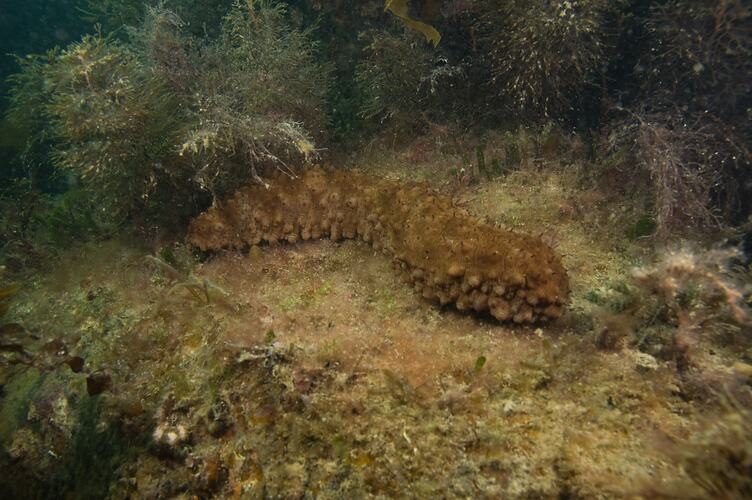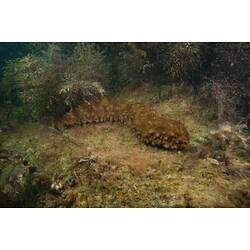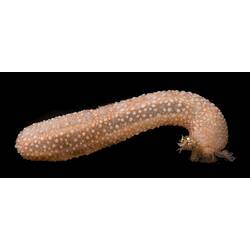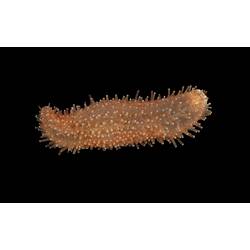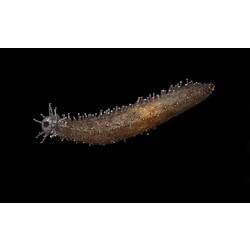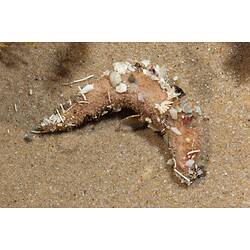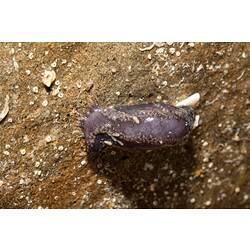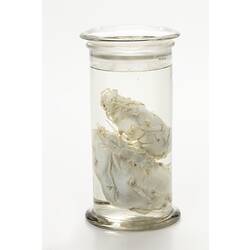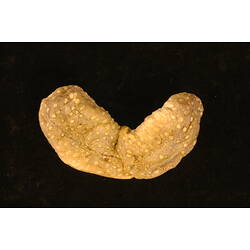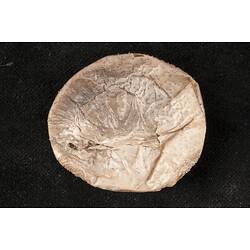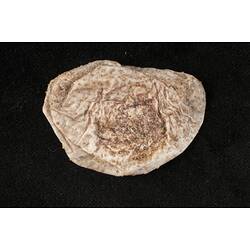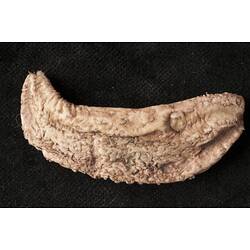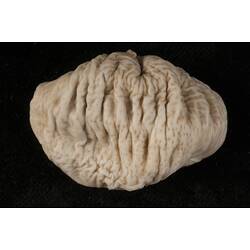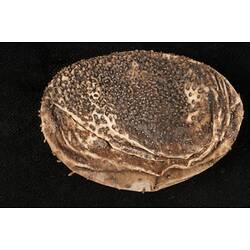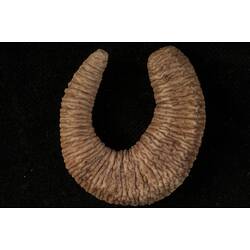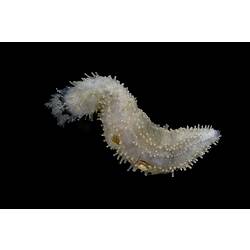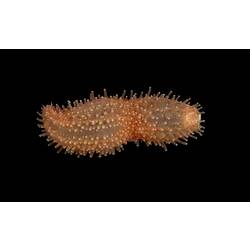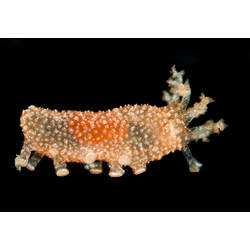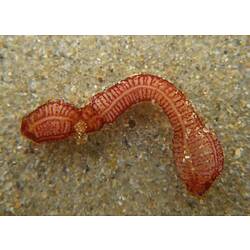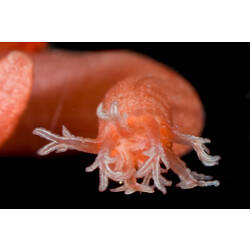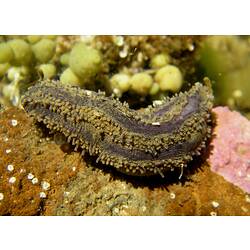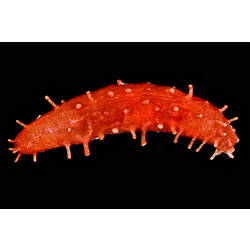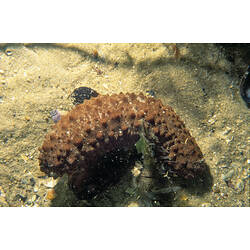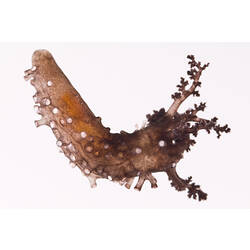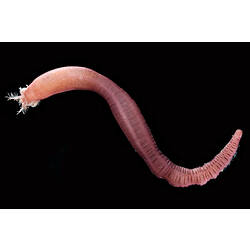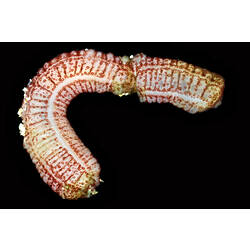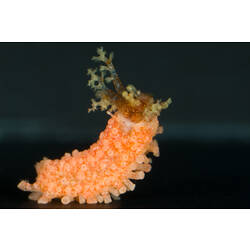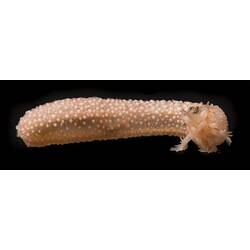General Description
As their name suggests, many holothurians have a long, cucumber-like appearance. Most species have five rows of tube feet called podia which they use to walk along the sea floor, though two rows of these are not used in locomotion. Around the mouth, a ring of modified tube feet form tentacles used for feeding. Sea cucumbers are considerably diverse, and display many shapes, colours and sizes. Size ranges from just a few millimetres up to five metres long.
Biology
Sea cucumbers are most closely related to sea urchins and sand dollars. Like their relatives, they are radially symmetrical . Sea cucumbers are also bilaterally symmetrical. Like other echinoderms, holothurians retain an endoskeleton underneath their skin made up of calcium carbonate plates. In most cases, these plates have been reduced to microscopic structures called ossicles.
Though most diversity occurs in coral reefs, sea cucumbers make up a large percentage of the animals found in the extreme deep sea. Though most spend their life walking along the sea floor, a number of deep sea species have developed the ability to swim through the water column, and one species is known to be entirely pelagic (
Distribution
Worldwide.
Habitat
Most diverse in shallow-water reefs, but range from intertidal platforms to deep ocean trenches. One species is known to be pelagic.
More Information
-
Animal Type
-
Animal SubType
-
Fast Fact
The oldest fossil evidence of sea cucumbers comes from the Silurian period, around 400 million years ago.
-
Brief Id
Sea cucumbers are a diverse group of soft-bodied echinoderms with a general worm-like appearance.
-
Maximum Size
5 m
-
Habitats
-
Diet
Organic matter
-
Endemicity
-
Commercial
No
-
Depths
Shore (0-1 m), Shallow (1-30 m), Deep ( > 30 m)
-
Water Column Locations
On or near seafloor
-
Taxon Name
-
Phylum
-
Class
